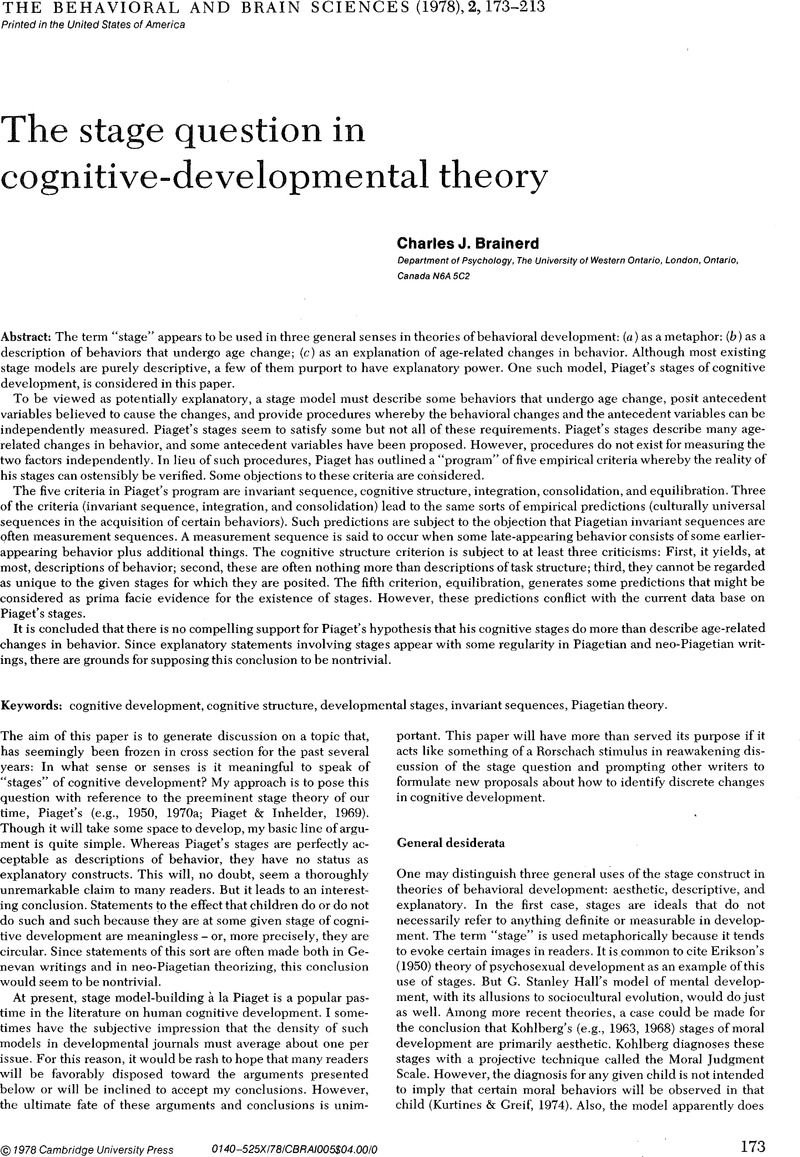Crossref Citations
This article has been cited by the following publications. This list is generated based on data provided by Crossref.
Brainerd, Charles J.
1978.
Invariant sequences, explanation, and other stage criteria: reflections and replies.
Behavioral and Brain Sciences,
Vol. 1,
Issue. 2,
p.
207.
Brainerd, Charles J.
1981.
Beyond universals in cognitive development.
Developmental Review,
Vol. 1,
Issue. 1,
p.
63.
Feldman, David Henry
1981.
The role of theory in cognitive developmental research: A reply to Brainerd.
Developmental Review,
Vol. 1,
Issue. 1,
p.
82.
Lingle, Kathleen M.
and
Lingle, John H.
1981.
Effects of Selected Object Characteristics on Object-Permanence Test Performance.
Child Development,
Vol. 52,
Issue. 1,
p.
367.
Silverstein, A. B.
Pearson, Linda Brownlee
Aguinaldo, Natalie E.
Friedman, Stanley L.
Takayama, Doris L.
and
Weiss, Zvi I.
1982.
Identity Conservation and Equivalence Convervation: A Question of Developmental Priority.
Child Development,
Vol. 53,
Issue. 3,
p.
819.
Brainerd, Charles J.
1982.
Task descriptions and circularity.
Behavioral and Brain Sciences,
Vol. 5,
Issue. 2,
p.
260.
Perret-Clermont, Anne-Nelly
1982.
From the study of psychological stages to the understanding of the processes involved in the cognitive development of child and pupil.
Behavioral and Brain Sciences,
Vol. 5,
Issue. 2,
p.
259.
Levin, Iris
and
Globerson, Tamar
1984.
The Development of Time Concepts among Advantaged and Disadvantaged Israeli Children.
The Journal of Genetic Psychology,
Vol. 145,
Issue. 1,
p.
117.
Roberts, Theresa A.
2014.
Not so silent after all: Examination and analysis of the silent stage in childhood second language acquisition.
Early Childhood Research Quarterly,
Vol. 29,
Issue. 1,
p.
22.





